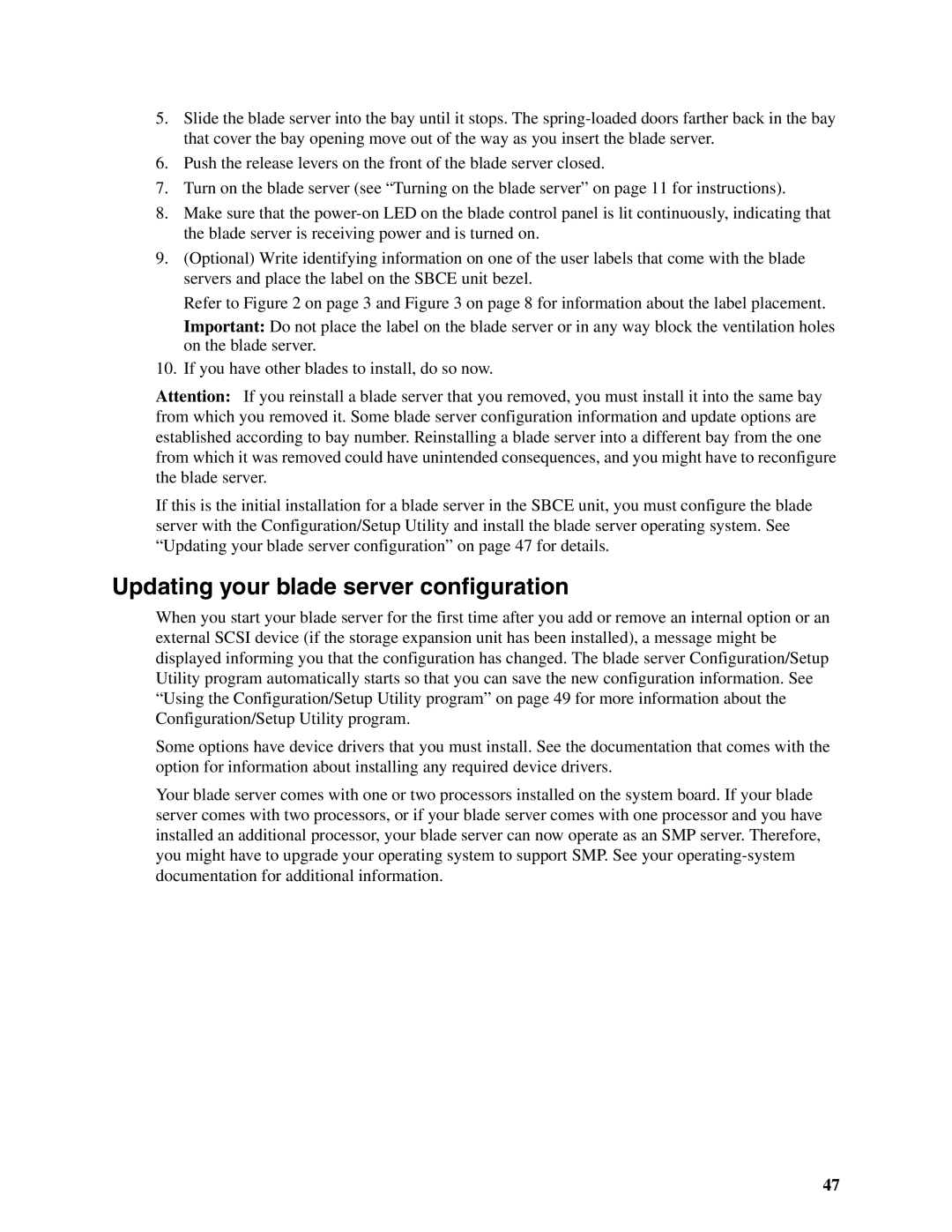5.Slide the blade server into the bay until it stops. The
6.Push the release levers on the front of the blade server closed.
7.Turn on the blade server (see “Turning on the blade server” on page 11 for instructions).
8.Make sure that the
9.(Optional) Write identifying information on one of the user labels that come with the blade servers and place the label on the SBCE unit bezel.
Refer to Figure 2 on page 3 and Figure 3 on page 8 for information about the label placement.
Important: Do not place the label on the blade server or in any way block the ventilation holes on the blade server.
10.If you have other blades to install, do so now.
Attention: If you reinstall a blade server that you removed, you must install it into the same bay from which you removed it. Some blade server configuration information and update options are established according to bay number. Reinstalling a blade server into a different bay from the one from which it was removed could have unintended consequences, and you might have to reconfigure the blade server.
If this is the initial installation for a blade server in the SBCE unit, you must configure the blade server with the Configuration/Setup Utility and install the blade server operating system. See “Updating your blade server configuration” on page 47 for details.
Updating your blade server configuration
When you start your blade server for the first time after you add or remove an internal option or an external SCSI device (if the storage expansion unit has been installed), a message might be displayed informing you that the configuration has changed. The blade server Configuration/Setup Utility program automatically starts so that you can save the new configuration information. See “Using the Configuration/Setup Utility program” on page 49 for more information about the Configuration/Setup Utility program.
Some options have device drivers that you must install. See the documentation that comes with the option for information about installing any required device drivers.
Your blade server comes with one or two processors installed on the system board. If your blade server comes with two processors, or if your blade server comes with one processor and you have installed an additional processor, your blade server can now operate as an SMP server. Therefore, you might have to upgrade your operating system to support SMP. See your
47
